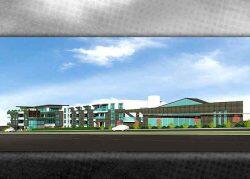Bowing to state housing regulators, the City of Manhattan Beach has given a green light to a 79-unit apartment complex fought by neighbors.
Three months after initially denying plans by developer Frank Buckley, the upscale South Bay city approved the four-story Highrose El Porto project at 401 Rosecrans and 3770 Highland avenues, the Torrance Daily Breeze reported.
The California Department of Housing and Community Development issued the city a notice of violation in November for denying the project and violating state housing laws.
If the City Council had turned the project down again, a court could have ordered the city to approve it within 60 days, or override the city and approve the project unilaterally, City Attorney Quinn Barrow said.
The developer, based in Sacramento, had filed a lawsuit in November asking the court to reverse the city’s denial and damages equal to the loss of its investment. It’s not yet clear whether Highrose will withdraw the lawsuit now that the developer can pursue the project.
“In the wake of this new development, we are assessing our options,” Highrose attorney Michael Shonafelt told the Breeze in an email.
Buckley’s plans call for a 40- to 50-foot high building on a triangle-shaped lot with 79 studio, one-, two- and three-bedroom apartments, of which six would be set aside as affordable. An underground garage would serve 127 cars.
The Highrose El Porto project will replace the Verandas Beach House event center and Tradewinds Village retail building. The two merged lots will allow for the Highrose project south of a Chevron oil refinery located in El Segundo.
The extended gray, turquoise and white building, designed by Torrance-based Withee Malcolm Architects, will include a pool, yard and terrace patio decks.
The developer received administrative approval — allowed under state law because of the six affordable units included in the 96,200-square-foot complex. Residents of the upscale South Bay city then appealed to the Planning Commission, which approved the project.
Under state law and the city’s code, the six low-income units slated for the development means the city should have approved Highrose unless the project would cause specific adverse environmental impacts.
Residents then appealed to the City Council, which finally rejected the project in October, saying they weren’t willing to approve an unconventional building near the oil refinery that could impact the health and safety of residents – despite other housing in that area.
But in denying the project, according to the state, Manhattan Beach didn’t provide specific reasons.
“To date, no such adverse impact has been identified by the appellants or the public,” said Talyn Mirzakhanian, acting planning director for the city. “And the proximity to Chevron hasn’t been determined as a quantifiable impact.”
Councilmembers who ultimately voted to OK the project did so reluctantly, according to the Breeze. Councilmember David Lesser shares residents’ cynicism about how a state density bonus law allowed the project.
“The idea of this large-scale property going there is agonizing,” Lesser said.
“Six affordable units means you get to build 79 and circumvent the city’s code.”
— Dana Bartholomew
Read more



